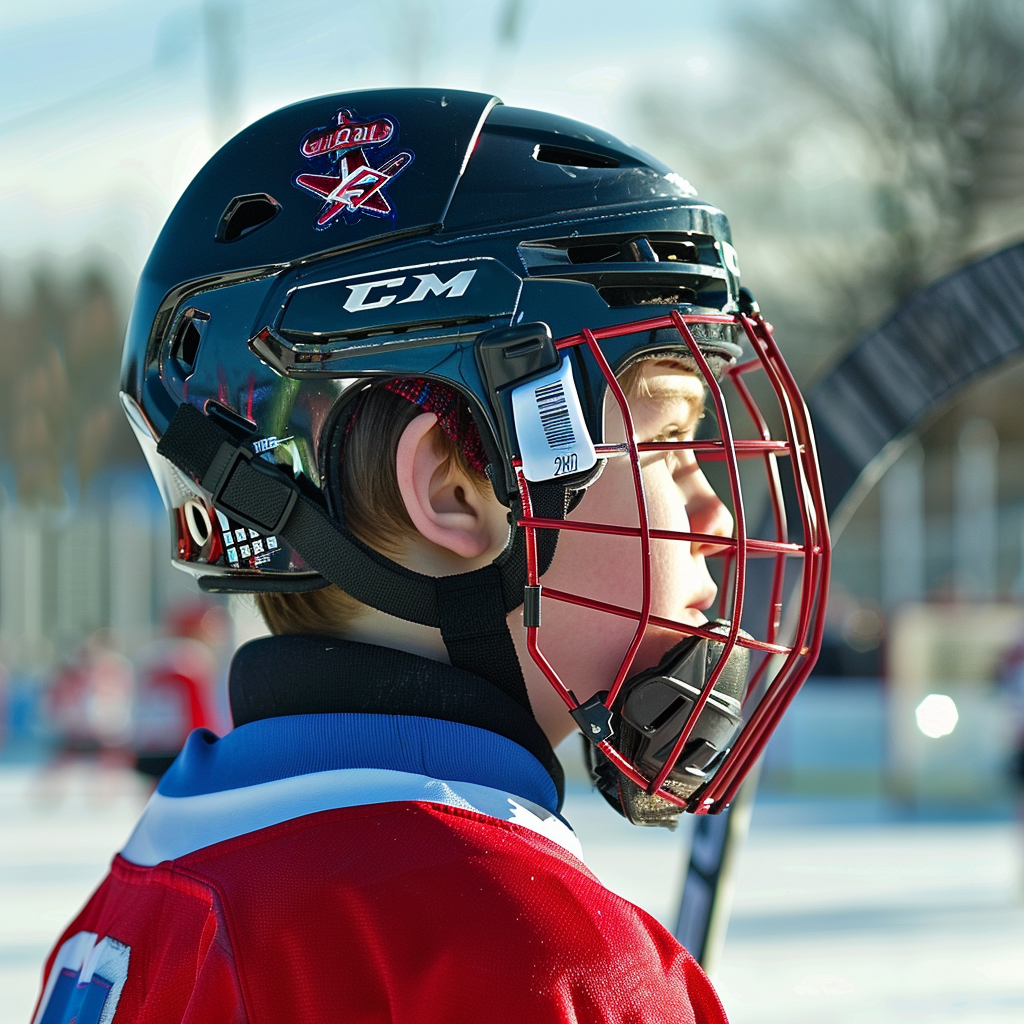
One of the most important pieces of protection in hockey is the helmet. A well-fitted helmet not only ensures the safety of the player, but also ensures comfort while playing, allowing you to concentrate on the gameplay.
Hockey helmet design
Hockey helmets have a sophisticated design that combines protective and comfort elements to ensure optimal player performance and safety. Let’s look at the main components and design characteristics of hockey helmets:
Appearance and materials:
- Helmets are made from durable, lightweight materials such as polycarbonate, impact-absorbing plastic, and composite materials.
- External design may vary depending on brand and model, but common features include a hard hat with vents and comfortable, adjustable head straps.
Designed and Shaped for Protection and Comfort:
- Hockey helmets have a special shape that provides protection from impacts and falls, as well as wearing comfort.
- The interior lining of a helmet is usually made of soft materials that provide shock absorption and support the player’s head in a comfortable position.
Adjustable elements to suit the player’s individual characteristics:
- Most helmets come with adjustable features such as straps and earpieces that allow the helmet to be adjusted to the size and shape of the player’s head.
- This is important to ensure a proper helmet fit that provides maximum protection and comfort while playing.
A well-designed hockey helmet is a key piece of equipment that provides protection and comfort to a player on the ice. Careful selection of a helmet based on its design will help the player feel confident and safe while playing.
Ventilation in hockey helmets
Ventilation plays an important role in player comfort and preventing head overheating during active gaming.Hockey helmets typically have vents or systems that allow air to circulate and remove excess heat and moisture. This is especially important in conditions of high intensity play and high temperatures on the ice. Ventilation systems can vary depending on the helmet model and include ventilation channels, vents or special technologies that direct air flow across the entire surface of the player’s head. This helps maintain an optimal microclimate inside the helmet and prevents overheating and excessive sweating, which can improve the player’s comfort and level of play.
Level of protection in hockey helmets
Hockey helmets are designed to provide maximum protection to the player’s head and face from impacts and injuries during the game.The level of protection a helmet provides depends on several factors, including the materials used, design, and compliance with safety standards. Many helmet models are certified and tested to international safety standards such as CSA, HECC or CE to ensure their ability to protect the player’s head from impacts and falls. The level of protection can also vary depending on the price and brand of the helmet, with some models offering additional protective features such as reinforced helmets, extra cushions or face shields. When choosing a hockey helmet, it is important to consider the level of protection and suitability of the player’s individual needs and playing style to ensure maximum safety and comfort during the game.
Factors to consider when choosing a helmet
When choosing a hockey helmet, a player should consider several important factors to ensure maximum protection, comfort and performance on the ice:
- Size and fit: The helmet must fit perfectly to the player’s head and provide a snug, stable fit without unnecessary pressure. This will help minimize the risk of injury and ensure maximum comfort when playing.
- Protection level: Hockey helmets have different levels of protection, so a player should choose a helmet that suits their playing level and playing style. More advanced helmet models often provide additional protection and comfort through the use of new technologies and materials.
- Ventilation: The helmet should have good ventilation to ensure air circulation and prevent your head from overheating during vigorous play.
- Materials: The materials used should be strong, lightweight and shock absorbent to provide adequate head protection.
Fit and examples of proper use of a hockey helmet
Proper helmet fit is a key aspect of ensuring it operates effectively and protects the player’s head. When fitted correctly, the helmet should fit snugly and comfortably on your head, without shifting or putting unnecessary pressure on your skin. Adjustable straps and fit systems allow players to customize the helmet’s fit to suit their individual features and preferences.
Examples of proper hockey helmet use include:
- Tight fit to the head without any play or gaps.
- Proper installation of the chin strap, which should be sufficiently tight to prevent the helmet from moving during play.
- Check the condition and integrity of the helmet before each use, as well as replace it in case of damage or wear.
Proper helmet fit and use provides maximum protection and comfort during play, allowing players to focus on achieving high performance.
A hockey helmet is an integral part of every player’s equipment, which plays a decisive role in ensuring safety and comfort on the ice. Over the course of this article, we have looked at various aspects of the selection and use of hockey helmets, including their design, level of protection, ventilation, and factors to consider when selecting and fitting them correctly. It is important to remember that a properly fitted and used helmet can significantly reduce the risk of injury and improve a player’s level of comfort and performance on the ice.
The level of protection of the helmet is critical and must suit the individual needs and playing style of the player.
Ventilation allows air to circulate and prevent overheating of the head, which improves player comfort and performance on the ice.
